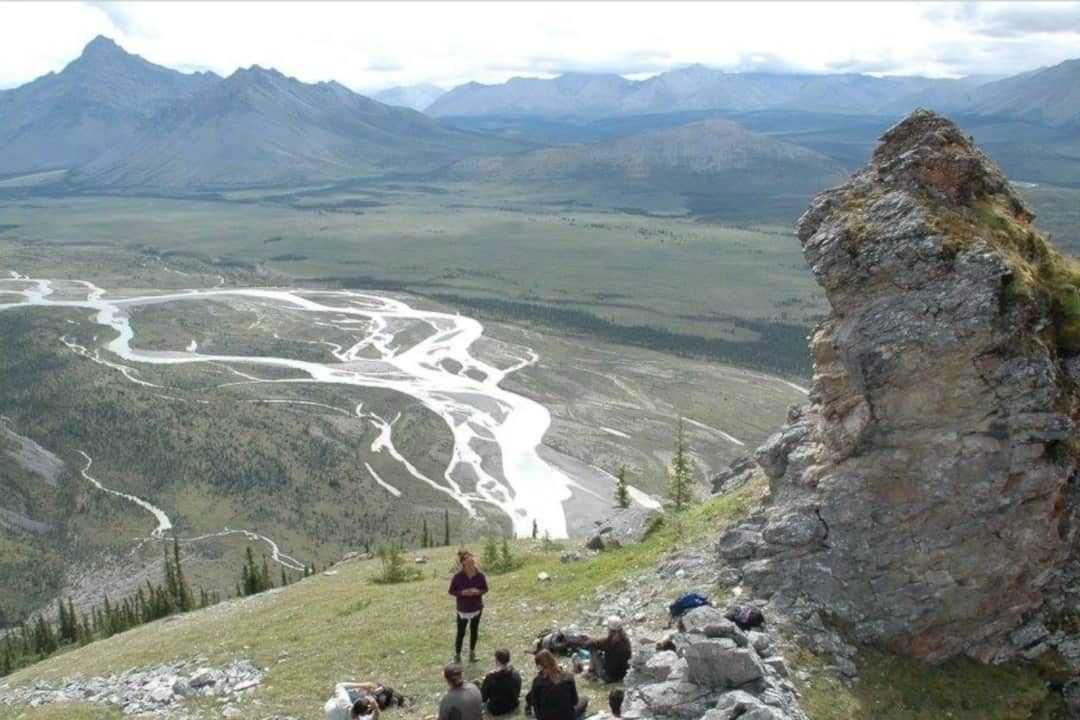Content warning: Discussions of suicide
A recent initiative named Project CREATeS, which stands for “Circumpolar Resilience Engagement and Action Through Story,” has been launched to involve Northern Indigenous youth in suicide prevention efforts. This helps mental health specialists juggle the difficult balancing act of implementing comprehensive solutions while also being cognizant of differing needs from different communities.
Rates of death by suicide in the Inuit communities of Nunatsiavut, Nunavik, Nunavut, and the Inuvialuit Settlement Region — particularly among youth — are between five and 25 times that of Canada’s non-Indigenous population.
The scope of the epidemic certainly calls for widespread action, but launching a new large-scale suicide prevention initiative runs the risk of worsening the problem.
For generations, health care efforts in Indigenous communities have tried to fit the wide diversity of the population into one-size-fits-all solutions. In the Arctic Circle, these methods were imported directly from southern Canada, and did not utilize existing community supports and cultural practices.
A new initiative for Indigenous youth
Dr. Allison Crawford, a professor at U of T’s Department of Psychiatry and The Centre for Addiction and Mental Health, and the Scientific Project CREATeS Lead, spoke with The Varsity about the initiative.
During a recent meeting at the Arctic Council, an international organization made up of countries and Indigenous nations that occupy territory in the Arctic Circle, Crawford’s team brought together Indigenous youth for a series of writing and storytelling workshops in order to connect them with peers who faced similar experiences.
At the end of these workshops, participants from all six permanent member countries of the Arctic Council, chosen by their respective communities, turned their own stories about their Indigenous identities and experiences with mental health into short films. These films will be shown to the council to advise future mental health initiatives.
Many participants have expressed that the opportunity to tell their stories, in and of itself, has been very useful to their own mental health. In addition, the workshops have brought them together into an invaluable international community.
“Not all Indigenous people feel like a part of their community. And when you don’t have your community, you still have the modern society, but you still aren’t a part of it, because you’re an Indigenous person,” said Juhán Nikolaus Wuolab Wollberg of the Saami Youth Council, in a documentary about the project.
Now, Wollberg is connected to dozens of peers who share that exact experience.
But, for all the project’s successful outcomes, Crawford said that her team’s efforts cannot end there. “[Just] watching stories can be very voyeuristic… Stories are not an endgame in and of themselves. That’s my biggest learning [from the project].”
Instead, participants have been brought back to present the project’s results to the Arctic Council, who funded the project — not only to help the Council develop solutions that build on those results, but to train the new generation of youth to become advocates for their own mental health.
Crawford is looking into running programs that facilitate digital storytelling along the lines of Project CREATeS as mental health initiatives in themselves. In addition, she’s hoping to send the films the participants created back to their respective communities in order to start up community discussions about mental health and suicide prevention.
An important achievement that this project could entail is sparking intergenerational conversations about mental health. It’s also important to remember that the suicide crisis is not happening in a void, as Crawford noted.
“I think [the suicide crisis] has a lot to do with the process of colonization, of being coerced into settlement, of loss of livelihood, loss of culture, [and] some other historical traumas like residential schools, loss of language,” she said. “All of those things, I think, created the conditions that led to those rates, and so what that means is that the solutions need to take that into account.”
“Taking medication for depression is not going to undo all that stress.”
A number of the youth, through their stories, talked about how empowering it is for them to reconnect with their communities’ traditions.
If this project helps a community open up discussions about how to preserve generations of traditional knowledge and resources, it might help a new generation of Northern Indigenous youth find the support and connections they need.
If you or someone you know is in distress, you can call:
- Canada Suicide Prevention Service phone available 24/7 at 1-833-456-4566
- Good 2 Talk Student Helpline at 1-866-925-5454
- Ontario Mental Health Helpline at 1-866-531-2600
- Gerstein Centre Crisis Line at 416-929-5200
- U of T Health & Wellness Centre at 416-978-8030.
Warning signs of suicide include:
- Talking about wanting to die
- Looking for a way to kill oneself
- Talking about feeling hopeless or having no purpose
- Talking about feeling trapped or being in unbearable pain
- Talking about being a burden to others
- Increasing use of alcohol or drugs
- Acting anxious, agitated, or recklessly
- Sleeping too little or too much
- Withdrawing or feeling isolated
- Showing rage or talking about seeking revenge
- Displaying extreme mood swings
The more of these signs a person shows, the greater the risk. If you suspect someone you know may be contemplating suicide, you should talk to them, according to the Canadian Association for Suicide Prevention.


